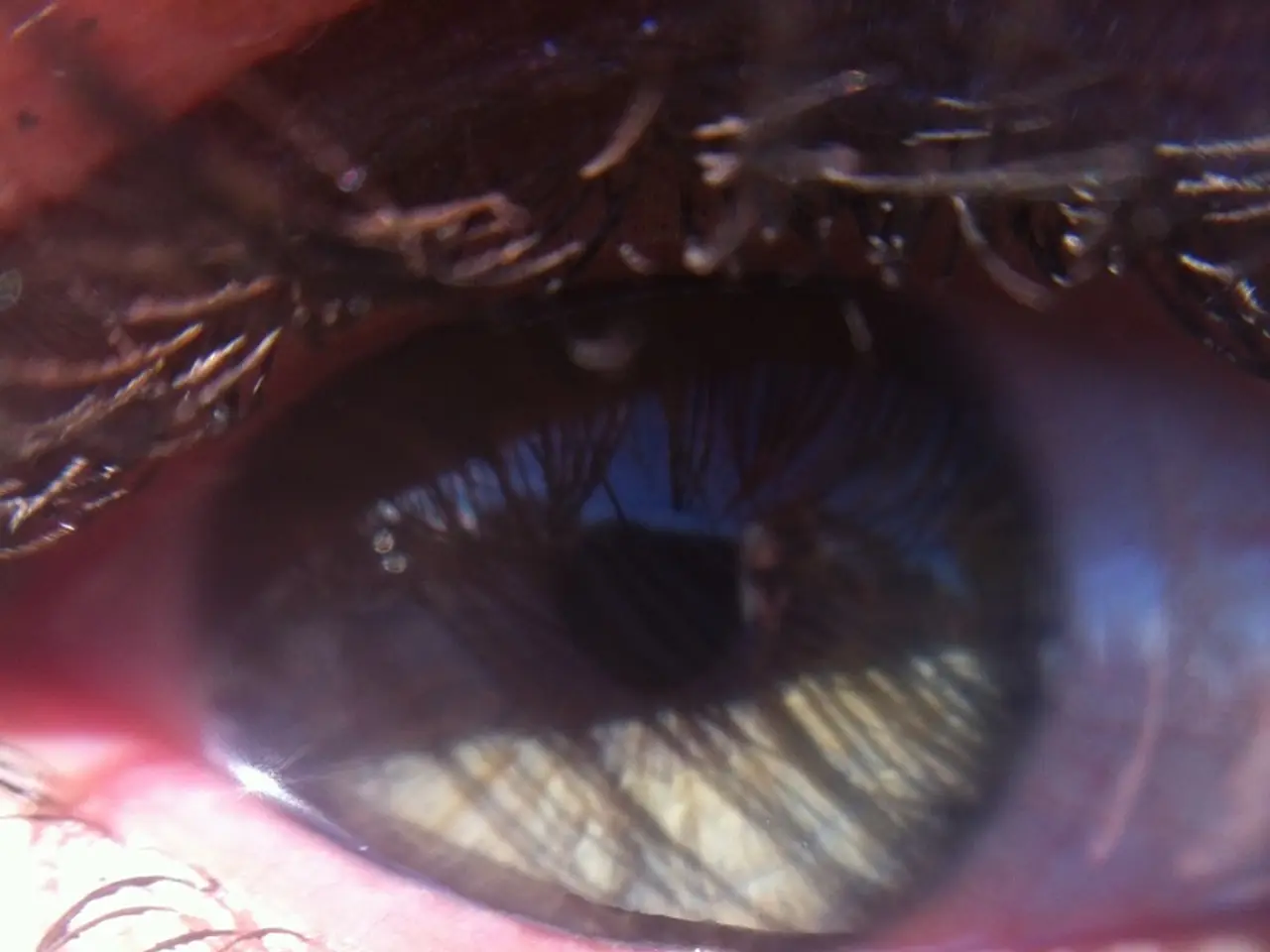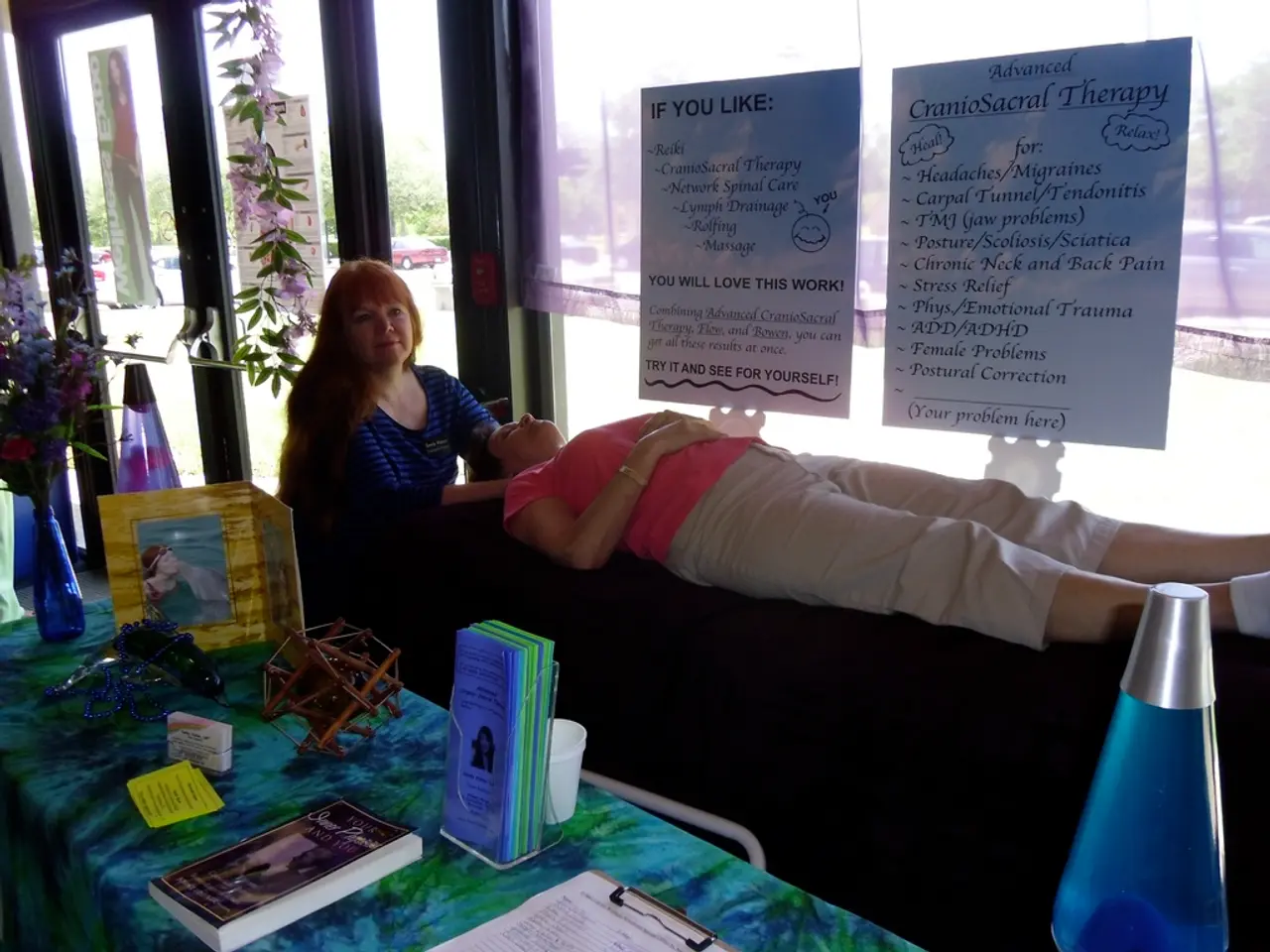Eye inflammation: Treatment options, symptoms, images, and origins
Chronic blepharitis, an inflammatory condition affecting the area around the base of the eyelashes, can be a persistent yet manageable issue. This condition is characterized by symptoms such as itchy eyelids, red eyes, irritated and watery eyes, flaking and crusting at the base of the eyelashes, burning or stinging eyes, oversensitivity to light, a gritty feeling in the eyes, and the sensation of having something in the eye.
Home remedies for chronic blepharitis treatment primarily focus on eyelid hygiene and symptom relief. Warm compresses, for instance, involve applying warm, moist washcloths or specialized hot compress eye masks to the eyelids. This helps loosen crusts, unclog oil glands, and reduce inflammation, providing significant relief and improving eye health.
Eyelid cleaning, or lid scrubs, is another common practice. Gently cleaning the eyelid margins with a mild, non-irritating soap such as diluted baby shampoo removes crusts and debris that exacerbate blepharitis.
For blepharitis caused by Demodex mites, diluted tea tree oil can help reduce mite populations and inflammation, but it should be used carefully to avoid irritation.
Artificial tears without preservatives are also beneficial, as they can help counter the dryness of the eyes caused by blepharitis during the day.
Regular consistency with these measures can control symptoms and prevent flare-ups. However, if symptoms persist or worsen, professional medical advice should be sought.
Self-care is the most important element of treatment for blepharitis. Maintaining lid hygiene as a self-care regime twice a day every day is crucial. Warm compresses should be applied for up to 10 minutes, followed by lid cleansing.
It's essential to note that treatment for blepharitis aims to relieve symptoms but cannot cure the condition. Doctors may use a slit lamp for diagnosis, a specially developed, low-power microscope with an intense thin-beam light source.
Treatment options beyond home remedies include electrochemical lid margin debridement (BlephEx), thermal pulsation treatment (Lipiflow), intense pulse light therapy (IPL), and antibiotics. These options may be considered when home remedies are not sufficient or when the condition is severe.
While blepharitis is not a sight-threatening problem, it can result in decreased vision, which can come and go. It's crucial to seek professional help if symptoms persist or worsen to prevent potential complications such as Meibomian cysts, conjunctivitis, or damage to the cornea.
Other conditions often appear with blepharitis, such as ocular rosacea, psoriasis, and seborrheic dermatitis. Understanding these connections can aid in managing the condition effectively.
In conclusion, chronic blepharitis can be challenging to live with, but with consistent self-care and the use of home remedies, symptoms can be managed effectively. If symptoms persist or worsen, it's important to seek professional medical advice.
- Manageable issues can include chronic blepharitis, an inflammatory condition affecting the eye area.
- Symptoms of blepharitis include itchy eyelids, red eyes, and watery eyes, among others.
- Warm compresses and specialized hot compress eye masks aid in loosening crusts, reducing inflammation, and improving eye health.
- Gently cleaning the eyelid margins with diluted baby shampoo can remove crusts and debris that worsen blepharitis.
- Diluted tea tree oil can help reduce mite populations and inflammation, but should be used carefully.
- Artificial tears without preservatives can help counter the daytime dryness caused by blepharitis.
- Consistency in warm compresses and lid cleansing twice a day can help control symptoms and prevent flare-ups.
- Although home remedies aim to relieve symptoms, they cannot cure the condition, and professional medical advice should be sought if symptoms persist or worsen.
- A slit lamp, a specialized microscope, may be used by doctors for accurate blepharitis diagnosis.
- Beyond home remedies, treatment options may include electrochemical lid margin debridement (BlephEx), thermal pulsation treatment (Lipiflow), intense pulse light therapy (IPL), and antibiotics.
- Despite not being a sight-threatening problem, blepharitis can result in decreased vision and potential complications such as Meibomian cysts, conjunctivitis, or corneal damage.
- Other conditions often associated with blepharitis include ocular rosacea, psoriasis, seborrheic dermatitis, and atopic dermatitis.
- Effective management of blepharitis requires commitment to self-care, understanding associated conditions, and seeking professional help when needed, for overall eye health, mental health, skin care, and health and wellness.




